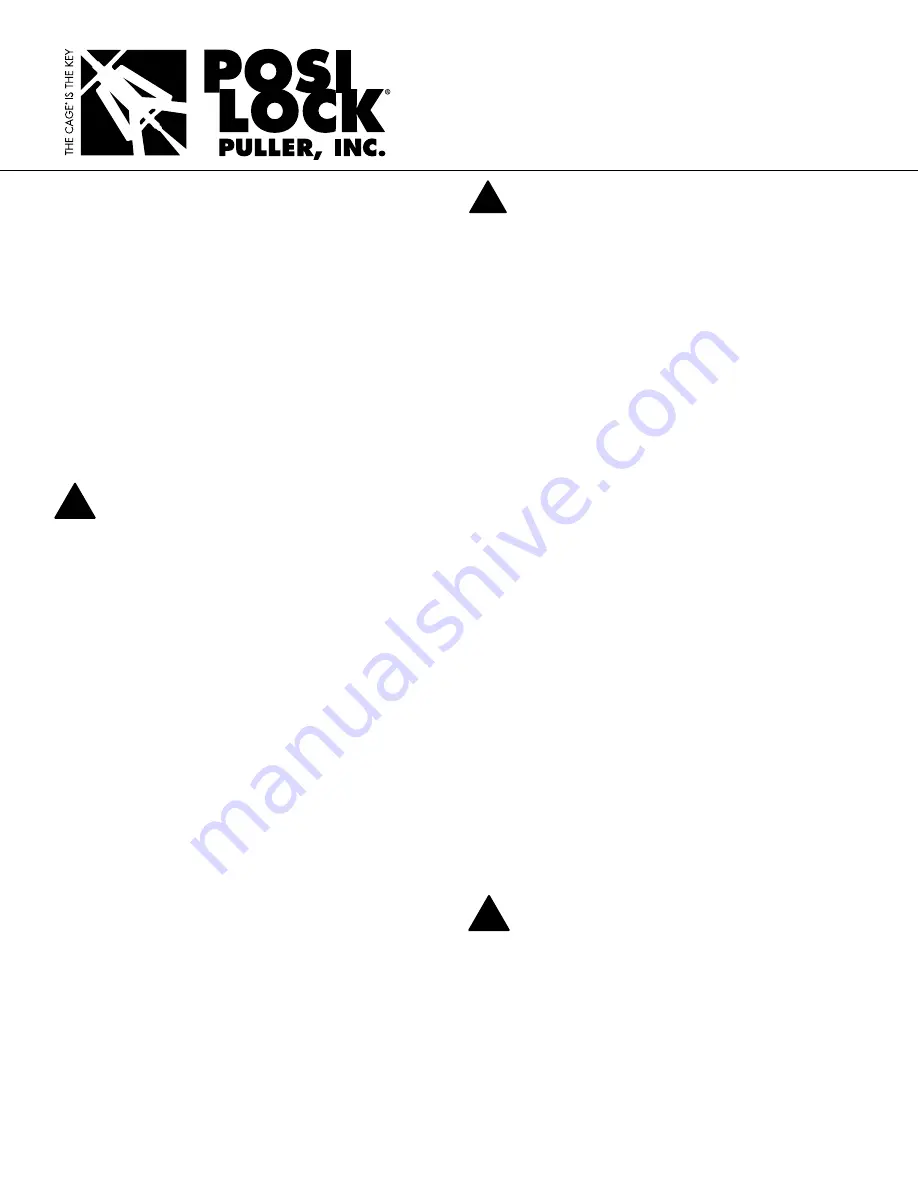
1
100-TON & 200-TON
Hydraulic Puller Systems
INSTRUCTION & PARTS SHEET
IMPORTANT: READ CAREFULLY!
IMPORTANT RECEIVING INSTRUCTIONS:
Visually inspect all components for shipping damage. Shipping
damage is not covered by warranty. If shipping damage is found
notify the carrier at once. The carrier is responsible for all repair
and replacement costs resulting from damage in shipment.
SAFETY FIRST:
It is impossible to predict the exact force needed for every
pulling situation. The amount of press-fit and force of removal
can vary greatly between jobs. The set-up requirements along
with the size, shape and condition of the parts being pulled
are all variables which must be considered. Remember that a
significant amount of force can be exerted with a puller. Respect
this force and always observe safety precautions. Failure to
comply with the following cautions and warnings could cause
equipment damage or personal injury.
WARNING:
DO NOT touch or handle hydraulic hoses or
fittings with pressure in the system. Escaping oil under
pressure may cause serious injury. If oil is injected under the
skin see a doctor immediately.
DO NOT make any electrical adjustments with electrical power
active in the system.
DO NOT make or break any hydraulic connections with pressure
in the system.
DO NOT overload the equipment. Use the right size puller.
DO NOT stand on, under or near the puller while in use. Keep
hands, feet and clothing away from moving parts.
To avoid personal injury and equipment damage, make sure
all hydraulic components withstand the maximum hydraulic
pressure of 700 bar (10,000 psi).
Make sure all system components are protected from external
sources of damage, such as excessive heat, flame, moving
machine parts, sharp edges and corrosive chemicals.
Always check to ensure that all cylinders and components are
securely fastened.
IMPORTANT:
Inspect puller for dents, cracks, or
excessive wear before each use. Immediately replace
worn or damaged parts.
It is recommended to use 3-jaw puller whenever possible for a
more secure grip, a more even pulling force and better stability.
Cover application with a protective blanket before applying
force. Since high force is applied on the part being pulled,
breakage may occur and user may be exposed to flying debris.
Use hydraulic gauges in each hydraulic system to indicate safe
operating loads.
Apply force gradually. Be sure the puller is square with the
component to be pulled.
Wear safety glasses or other approved eye protection.
Keep hands away from possible pinching points.
Always make sure the puller is aligned with the shaft.
Select the appropriate ram extender for each application.
Always place the puller in the lowest position and remove ram
extenders while transporting.
Keep slide rollers and mast clean and lubricated.
Always keep puller hoist vertical and the control valve closed
when not adjusting vertical position.
A small amount of oil seepage is normal from breather vent on
hoist cylinder.
Use only genuine POSI LOCK parts and endorsed hydraulic
components.
CAUTION:
Make sure that all items being pulled are
supported by a means other than the puller. When
using a puller in excess of 50 pounds, support puller by other
means than a single person. Do not use the puller for lifting or
supporting objects.
Avoid sharp bends and kinks in hoses as they may lead to
premature hose failure. Inspect hoses and fittings for leaks or
damaged areas. Immediately discard and replace damaged
components.
!
!
!

































